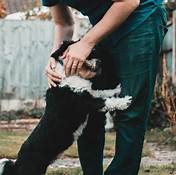Is Acrylic Paint Toxic to Pets?
Acrylic paint is a common medium for artists and hobbyists, but it can be hazardous to pets if ingested.

Toxicity of Acrylic Paint to Pets
The toxicity of acrylic paint to pets depends on the ingredients of the paint, the amount ingested, and the pet's size and species.
1. Ingredients
Acrylic paint contains various ingredients, including:
- Acrylic resin: This is the main ingredient in acrylic paint and is generally non-toxic.
- Pigments: These are used to give acrylic paint its color and can be either natural or synthetic. Some pigments, such as cadmium and lead, are toxic to pets.
- Additives: These are used to improve the performance of acrylic paint, such as flow improvers and anti-foaming agents. Some additives can be toxic to pets.
2. Amount Ingested
The amount of acrylic paint ingested will determine the severity of the pet's symptoms. A small amount of paint may cause mild stomach upset, while a larger amount can lead to more serious health problems.
3. Pet's Size and Species
The size and species of the pet will also affect the severity of the symptoms. Smaller pets are more likely to be affected by acrylic paint toxicity than larger pets. Additionally, some species of pets, such as cats, are more sensitive to acrylic paint than others, such as dogs.
Symptoms of Acrylic Paint Toxicity in Pets
The symptoms of acrylic paint toxicity in pets can vary depending on the amount ingested and the pet's size and species. Common symptoms include:
- Vomiting
- Diarrhea
- Nausea
- Abdominal pain
- Loss of appetite
- Lethargy
- Difficulty breathing
- Seizures
- Death
Treatment for Acrylic Paint Toxicity in Pets
If you think your pet has ingested acrylic paint, it is important to seek veterinary attention immediately. The veterinarian will assess the pet's condition and determine the appropriate treatment.
Treatment for acrylic paint toxicity in pets may include:
- Inducing vomiting
- Administering activated charcoal
- Providing supportive care, such as fluids and electrolytes
- Treating specific symptoms, such as respiratory distress or seizures
Prevention of Acrylic Paint Toxicity in Pets
The best way to prevent acrylic paint toxicity in pets is to keep paint and other art supplies out of reach. Additionally, you should never allow your pet to chew on or lick objects that may have been painted with acrylic paint.
If you have any questions about the toxicity of acrylic paint to pets, please consult with your veterinarian.
Declaration: All article resources on this website, unless otherwise specified or labeled, are collected from online resources. If the content on this website infringes on the legitimate rights and interests of the original author, you can contact this website to delete it.





